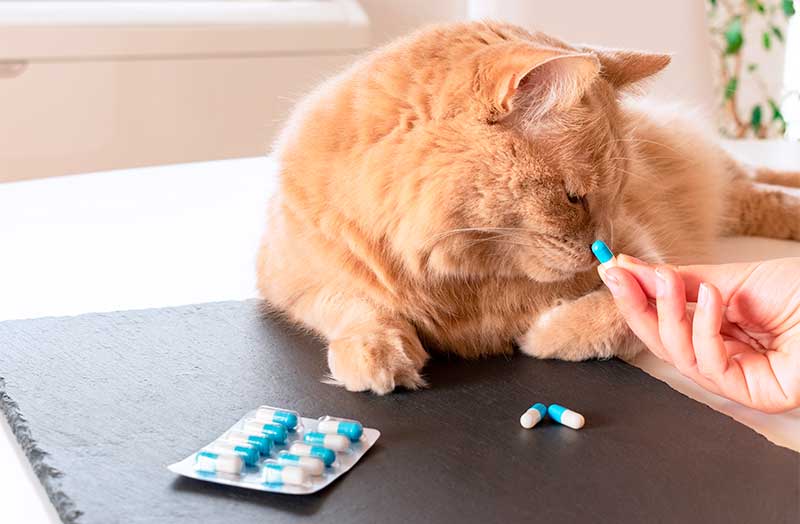
You love giving your pet everything they need—except for medication. Then, you love the idea more than the process.
Although we know we make administering medication look easy, Animal Emergency Hospital and Urgent Care understands that medicating pets can be incredibly difficult. Who hasn’t felt like they need two extra arms, cat-like reflexes, and Crocodile Hunter-level fearlessness to simply get a tiny pill down their pet’s throat?
We may not be able to give you a superhuman advantage, but here is our brief guide to simplify administering your pet’s medication for those times when the cure feels more painful than the disease.
#1: Nobody—not you, or your pet—gets hurt
This guide is to help you with a pet with mild to moderate medication stress. If your pet has a history of biting or violent physical struggle, consult your veterinarian for alternative medication options or behavioral guidance.
#2: Change the formula, change the game for your pet
Ask your veterinarian if the prescribed medication is available in other formulations. Certain drugs can be compounded and made into different formulations, such as flavored liquids and chews. Several single-treatment preparations for antibiotics and ear medications can eliminate daily dosing.
#3: Veterinary medicine—and medicating pets—is a team sport
When your pet is prescribed a new medication, ask the veterinary team to demonstrate administration. Once you are home, if you need further clarification, a team member may be able to guide you through a video chat. This way, the professionals can see how you are doing at home where your pet is most comfortable.
#4: Set a good example, and stay calm for your pet
If you aren’t confident, your pet won’t be. Try to stay calm, relaxed, and optimistic about medicating your pet. We often anticipate our pet’s behavior and then they live up to our expectations, because they sense our unease and stress, and want to escape the negative situation.
#5: Practice before, not after, your pet needs help
At some point, every pet will need medication or treatment. Help your pet learn that touch and handling their different body parts are good experiences by training them while they are healthy. By pairing touch with tasty treats and praise, your pet will learn to associate physical contact with wonderful rewards.
- Always begin with a less sensitive area, such as their back.
- Follow each brief, gentle touch by a treat.
- Gradually work toward your focus—an ear, foot, or muzzle.
- Keep the steps small, so your pet does not react negatively, such as pulling away or flinching.
- If your pet opts to leave the session, you can try to encourage them back, but never force them to participate. Go more slowly during your next session.
- Keep each training session to only a few minutes, reward your pet generously after every step, and quit before they get tired.
In time, you should be able to perform the following actions:
- Look in each of your pet’s eyes while gently holding their muzzle
- Hold and look inside each ear
- Lightly hold their muzzle or chin
- Pick up each foot at the ankle joint, and touch their toes
- Lift their tail
You can use the same training process to simulate and perform ear cleaning, medicating, and nail trimming. First, introduce the tool—for example, to medicate your pet, simply let them see the bottle, and gradually progress toward contact. Take time to ensure your pet does not become nervous, to avoid a setback. Many pets will react negatively to the mere sight of a pill bottle.
#6: Tricky treating, and the art of pill hiding for pets
When your pet needs oral medication, you may reflexively reach for the peanut butter, but that might do more harm than good. The benefit of some medications may be counteracted by their tantalizing wrapping treat (e.g., gallbladder medicine wrapped in cheese or lunch meat). Also, crushing tablets and opening capsules can affect absorption rate. Always speak to your veterinarian first about any possible food, interactions and foods to avoid, and using creativity to administer your pet’s medication.
If your pet must be medicated on an empty stomach, learn how to manually pill your pet correctly. Veterinary technicians are typically medication gurus and can demonstrate for you. You may also find this resource, and many YouTube video tutorials, helpful for dogs and cats.
#7: Pressure point—restraint may be your pet’s problem
Pets are strongly influenced by physical and spatial pressure.
- Directly facing a pet is intimidating, so stand or sit perpendicular to your pet when applying eye and ear medication.
- Pets can be frightened when you lean over, so you should sit down, and small pets should be placed on a bed or chair.
- For pets who panic when held or restrained, you can try slow treat dispensers and mats that you attach to the wall or floor, to distract them. Cats and dogs may lick soft food from a spoon held over their head as you administer eye medication.
Ensure you discuss all your medication concerns and challenges with your pet’s primary veterinarian. For emergency services, contact the Animal Emergency Hospital and Urgent Care. We want medicating your pet to be as pleasant as possible, for you and your pet
